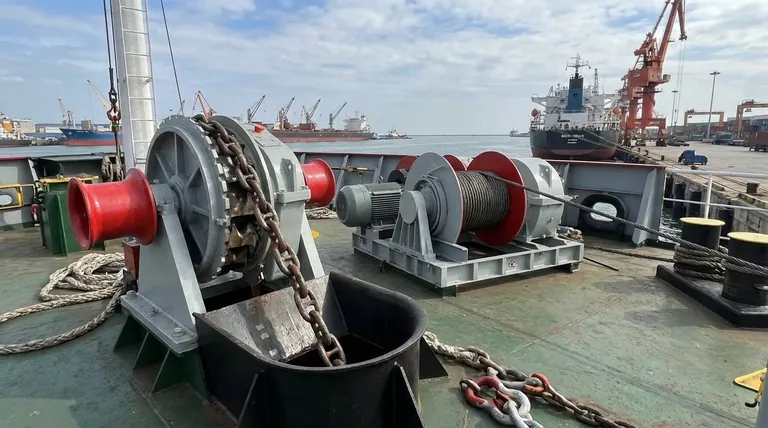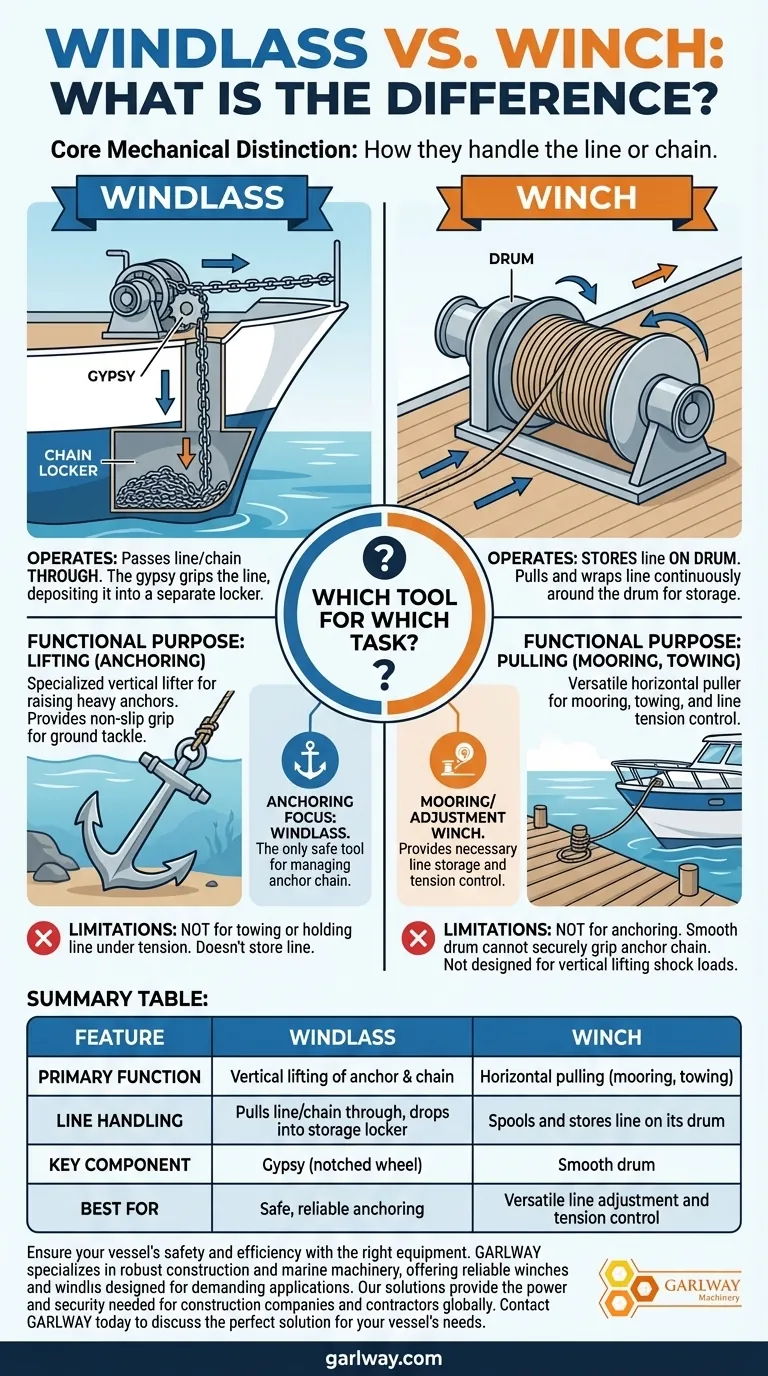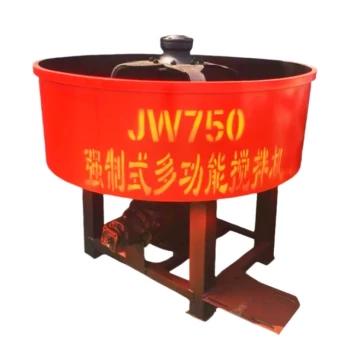At its core, the fundamental difference between a windlass and a winch is how they handle the line or chain. A winch stores the line by wrapping it continuously around its drum, effectively using the drum for both pulling and storage. In contrast, a windlass uses a specialized wheel called a gypsy to grip and pull the line or chain, passing it through the mechanism and depositing it into a separate storage locker below deck.
While both devices are designed to pull a line under load, they solve different problems. A windlass is a specialized vertical lifting machine for raising and lowering an anchor. A winch is a more versatile horizontal pulling machine used for tasks like mooring or adjusting tension.

The Core Mechanical Distinction: Storing vs. Passing Through
Understanding how each device physically interacts with a line is the key to understanding its purpose. The designs are fundamentally different, dictating their specific applications on a vessel.
How a Winch Operates
A winch is designed with a drum that acts as a spool. As the winch turns, it pulls the rope, cable, or wire and stores it by winding it neatly onto this drum.
The entire length of the line being used is held on the winch itself. This makes it ideal for applications where you need to adjust line length or maintain tension over time.
How a Windlass Operates
A windlass does not store the line. Instead, it features a notched wheel, known as a gypsy, that is precisely shaped to grab the links of an anchor chain or the strands of a rope.
The gypsy pulls the chain or rope through the windlass mechanism and simply drops it down a pipe (the hawsepipe) into a dedicated storage compartment called the chain locker. The windlass only engages a small section of the line at any given moment.
Functional Purpose: Lifting vs. Pulling
The mechanical differences directly lead to specialized roles. One is a purpose-built lifter, while the other is a general-purpose puller.
The Windlass: An Anchoring Specialist
A windlass is engineered for one primary, high-stakes job: vertically lifting the immense dead weight of an anchor and chain from the seabed.
Its design provides the powerful, non-slip grip required to securely manage hundreds of pounds of ground tackle, a task for which a standard winch is not suited.
The Winch: A Versatile Pulling Tool
A winch is used for a wide variety of tasks that primarily involve horizontal or angled pulling force.
Common uses include tightening mooring lines at a dock, towing, or trimming sails on a sailboat. They provide excellent control for managing and adjusting line tension.
Understanding the Trade-offs
Using the wrong tool for the job can be inefficient and, more importantly, dangerous. Each device has clear limitations outside of its intended function.
Windlass Limitations
A windlass is not a general-purpose tool. Because it doesn't store the line, it is unsuitable for tasks like towing or adjusting a spring line where the line needs to be held under tension on the device itself.
Winch Limitations
A standard winch should never be used for anchoring. Its smooth drum cannot securely grip an anchor chain, creating a significant risk of slippage. Furthermore, winches are typically not designed to handle the specific shock loads and dead-weight vertical lifting associated with breaking an anchor free from the seabed.
Making the Right Choice for Your Vessel
Selecting the correct equipment is a matter of matching the tool to the critical task it must perform.
- If your primary focus is safe and reliable anchoring: A windlass is the only appropriate and safe tool for managing an anchor chain.
- If your primary focus is mooring, docking, or line adjustment: A winch provides the necessary line storage and tension control for these operations.
- If you require both functions, as most larger boats do: You will have a dedicated windlass at the bow for anchoring and multiple winches placed strategically for handling other lines.
Choosing the correct device is a foundational element of safe and effective seamanship.
Summary Table:
| Feature | Windlass | Winch |
|---|---|---|
| Primary Function | Vertical lifting of anchor & chain | Horizontal pulling (mooring, towing) |
| Line Handling | Pulls line/chain through, drops into storage locker | Spools and stores line on its drum |
| Key Component | Gypsy (notched wheel) | Smooth drum |
| Best For | Safe, reliable anchoring | Versatile line adjustment and tension control |
Ensure your vessel's safety and efficiency with the right equipment. GARLWAY specializes in robust construction and marine machinery, offering reliable winches and windlasses designed for demanding applications. Our solutions provide the power and security needed for construction companies and contractors globally. Contact GARLWAY today to discuss the perfect solution for your vessel's needs.
Visual Guide

Related Products
- Heavy Duty Electric Boat Winch Windlass Anchor
- Warn Winch Windlass Boat Trailer Winch
- Electric and Hydraulic Winch for Heavy Duty Applications
- Electric Hoist Winch Boat Anchor Windlass for Marine Applications
- Electric 120V Boat Winch by Badlands
People Also Ask
- What are marine electric winches and their characteristics? Key Features for Reliable Maritime Operations
- What are the main benefits of a boat anchor winch? Boost Safety & Efficiency for Your Vessel
- How do electric boat winches work? Unlock Effortless Launching & Retrieval
- How does the anchor windlass operation sequence work? Master Safe & Controlled Anchor Handling
- What is the general user satisfaction with boat anchor winches? A Game-Changer for Boaters



















